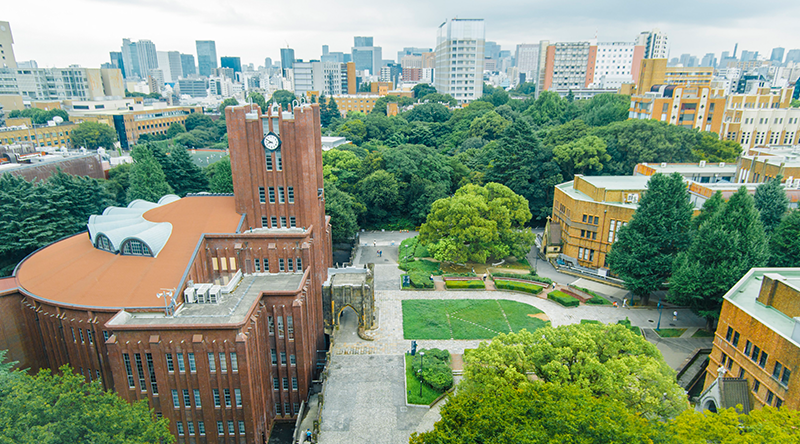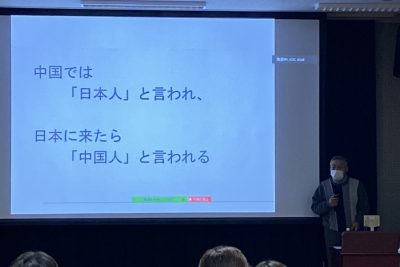Will Digital Technology Save Us? : The Post-Coronavirus World

How long will the city lockdowns and closed borders continue?
On April 7th, a state of emergency was declared for 7 of Japan’s prefectures, including Tokyo, and citizens were asked to reduce their contact with other people by 80%. As I write this now on April 16th, the state of emergency has now been expanded to all 47 of Japan’s prefectures. Many countries in Europe have closed their borders and are allowing no one in or out. In the United States, there are ongoing curfew rules which are affecting more than 300 million people. On the other hand, in China, the nation where the novel coronavirus originated, the closure of the city of Wuhan and the curfews which affected the entire country have come to an end after 2.5 months, and people are beginning to return to the cities. If the figures reported by the Chinese government can be trusted, the number of new infections has dropped to under 100 per day, with the majority of them originating from outside of the country. For this reason, China’s borders have been almost completely closed to foreigners for the past month. In the future, the number of new infections in Europe and the United States is expected to peak and then fall back, declining dramatically within the next one to two months1, at which point the curfews and other restrictions will likely be lifted as they have been in China. Is there a way to prevent the secondary and tertiary waves of exponential infection anticipated after isolation restrictions are lifted? This will force each country to maintain some type of isolation for the prevention of surges in infection originating from the outside, and these measures are likely to remain in place for the foreseeable future. A world which requires two weeks of isolation to cross a national border would be equivalent to returning to the ancient world, a time when the travel itself took this long. If this cycle of isolation and homebound curfew regulations continues to repeat for a year or more until a vaccine is developed, it will have a tremendous impact on the global economy, to the extent that people are saying a post-coronavirus world is likely to be completely different from the way it was before.
The countermeasures being used to contain the novel coronavirus right now are no different from those employed to mitigate the Spanish flu pandemic 100 years ago. These classical methods, namely isolating patients, tracing and testing transmission routes, quarantining people in contact with patients, expanding of social distancing, and improving hygiene, are truly our only way to control pandemics. If another surge occurs and produces exponential growth in infections, the identification of transmission routes and detection of individuals exposed to the infected (so-called cluster prevention measures) will be unable, and if nothing is done the pandemic will continue until around 60% of the population has achieved immunity.2 The only method which can prevent this exponential infection is reducing the number of people the virus spreads to from each infected individual (the basic reproduction number, or R0) to 1 or less3 by imposing curfews, shutting down business, and closing off entire cities. This is what is happening right now in Japan and all over the world. However, there is still one point of hope. New potential in the use of digital technology has come to light, and it has the potential to become the savior of the new era. This potential takes the form of two methods, contact tracing and staying a step ahead, which are achieved through the use of IT privacy protection algorithm technology.
Digital Contact Tracing
Although I wrote that there was hope in Asia last time, there are also countermeasures which have already started their trial runs in some countries such as Singapore. The results of a research study conducted by Imperial College London examining the effectiveness this method could have was recently published in the Science journal.
This research group has been carrying out theoretical epidemiological research since the SARS outbreak, and this report is a logical evaluation of the effectiveness of the digital contact tracing technique which considers the distinctive features the novel coronavirus. The possible transmission routes for the virus are broken down into four categories. (The categories are as follows: 1. Infecting others before showing any symptoms, 2. Infecting others after showing symptoms, 3. Infecting others while remaining asymptomatic, and 4. Indirect environmental infection without close contact with an infected person.) For each of these four categories, isolation probabilities and time delay were evaluated, and conditions for suppressing exponential infection were investigated. The results are shocking. In Figure 1, the horizontal axis indicates the success rate of isolating cases and the vertical axis represents success rate for identifying and isolating the transmission route (preventing close contact with the infected person). Red indicates the range in which exponential infection occurs, green indicates the range in which it is suppressed, and the solid black line indicates the critical condition which forms the boundary between the two (R0 = 1). The graph on the far left shows the result when isolating the infected person is delayed by 3 days. Nearly the entire graph is red, showing that if people continue their usual lifestyle patterns, even if cluster countermeasures are implemented, exponential infection is nearly unavoidable. Even if infected people are identified 100% of the time and those in close contact with them are identified and isolated at home or in hospitals 100% of the time, these theoretical findings show that exponential infection still cannot be avoided. In this case, it becomes impossible to know where the infected people are, so the only way to prevent exponential infection is to lock up and isolate every single person.
On the other hand, the other graphs moving to the right in Figure 1 show the results for isolation with a 2-day delay, a 1-day delay, and no delay, respectively, indicating the calculation results when the time between infection detection and isolation is shorter (incubation period is taken into consideration). The shorter the delay, the larger the green area becomes, indicating a broader range of conditions in which exponential infection is suppressed. For example, in the graph on the far right, which indicates no delay between infection detection and isolation, if 60% of infection cases and 60% of those in close contact with them are identified, this is sufficient to prevent exponential infection. In other words, shutting down cities and requesting people isolate themselves at home becomes unnecessary.
The paper states the possibility that using a method called digital contact tracing could minimize the time between infection detection and isolation and enable locking down cities to be avoided.

Figure1 L. Ferretti et al., Science, 10.1126/science.abb6936 (2020)より引用。








